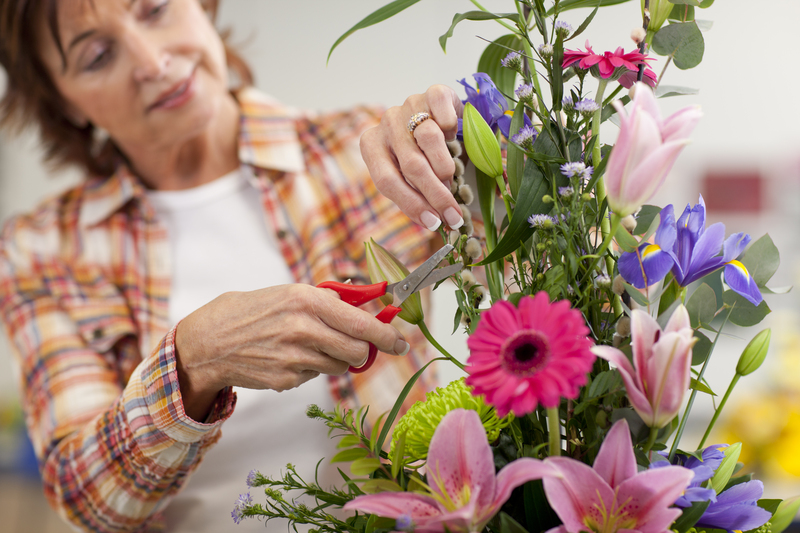Chrysanthemums for All Seasons
Posted on 04/04/2025
Introduction to Chrysanthemums
Chrysanthemums, affectionately known as mums, are more than just a beautiful addition to your garden. These versatile flowers are championed for their remarkable variety, hardy nature, and vibrant blooms that last across multiple seasons. Truly, chrysanthemums for all seasons can transform any garden or landscape into a year-round spectacle of color and elegance.

History and Significance of Chrysanthemums
Originating from Asia and Northeastern Europe, chrysanthemums have a rich cultural heritage, especially in China and Japan where they symbolize longevity and rejuvenation in life. In the United States, these flowers are commonly associated with fall, but with the right care, they can thrive in various climates and blooms can be enjoyed throughout the year.
Different Varieties of Chrysanthemums
There are hundreds of chrysanthemum varieties, each boasting unique shapes, sizes, and colors. Here are some popular varieties:
1. **Single or Daisy Chrysanthemums**: Resembling daisies, these have a central disc surrounded by petals.
2. **Pompon Chrysanthemums**: Small, globular in shape, and compact.
3. **Spider Chrysanthemums**: Characterized by long, tubular petals that droop and resemble spider legs.
4. **Anemone Chrysanthemums**: Feature a cushion-like center with one or more rows of petals.
Planting Chrysanthemums for Year-Round Blooms
To enjoy chrysanthemums across all seasons, follow these easy steps:
1. **Choose the Right Variety**: Some chrysanthemum varieties bloom early in the season while others bloom late. Select a mix to ensure continuous blooms.
2. **Location and Soil**: Plant chrysanthemums in well-drained soil with at least 6 hours of sunlight daily.
3. **Water and Fertilizer**: Keep the soil consistently moist but not soggy. Use a balanced fertilizer about once a month.
4. **Pruning**: Regularly pinch back the growth to encourage bushiness and more blooms.
Chrysanthemum Care Across Different Seasons
**Spring and Summer**:
- Start with planting or transplanting chrysanthemums.
- Ensure that new plants are well-watered and start fertilizing after one month.
- Pinch off the tops to promote fuller growth and more flowers.
**Fall**:
- Chrysanthemums generally bloom in fall, showcasing their vibrant colors.
- Continue to water and deadhead (remove spent blooms) to prolong blooming.
**Winter**:
- In colder climates, mulch chrysanthemums to protect them from freezing.
- Consider bringing potted chrysanthemums indoors.
Pros and Cons of Growing Chrysanthemums
**Pros**:
- **Diverse Varieties**: Wide range of colors and flower forms to choose from.
- **Extended Bloom Period**: With proper care, they can bloom throughout multiple seasons.
- **Hardiness**: Resistant to many pests and diseases.
- **Versatility**: Suitable for garden beds, borders, and containers.
**Cons**:
- **Maintenance**: Requires regular pruning and deadheading.
- **Susceptibility**: Vulnerable to issues like powdery mildew and aphids.
- **Cold Sensitivity**: Some varieties need winter protection.
Tips for Growing Successful Chrysanthemums
- **Right Timing**: Plant chrysanthemums after the last frost in spring.
- **Proper Spacing**: Ensure enough space between plants to enhance airflow and prevent disease.
- **Companion Planting**: Grow with companion plants like marigolds and lavender to deter pests.
- **Pot Culture**: Grow in pots for easy management and mobility.

Key Takeaways
- Chrysanthemums are versatile and can bloom in multiple seasons with the right care.
- Choose a variety of types to ensure a staggered blooming schedule.
- Maintain consistent care throughout the year, adapting practices to each season.
- Be mindful of challenges like pests and winter care for long-lasting plants.
Conclusion
Chrysanthemums are a brilliant choice for any gardener looking to add vibrant, lasting beauty to their space. By exploring diverse varieties, providing adequate care, and understanding the nuances of seasonal maintenance, you can enjoy chrysanthemums for all seasons. Whether you're a novice or an experienced gardener, the rewards of cultivating these magnificent flowers are both gratifying and visually spectacular.


